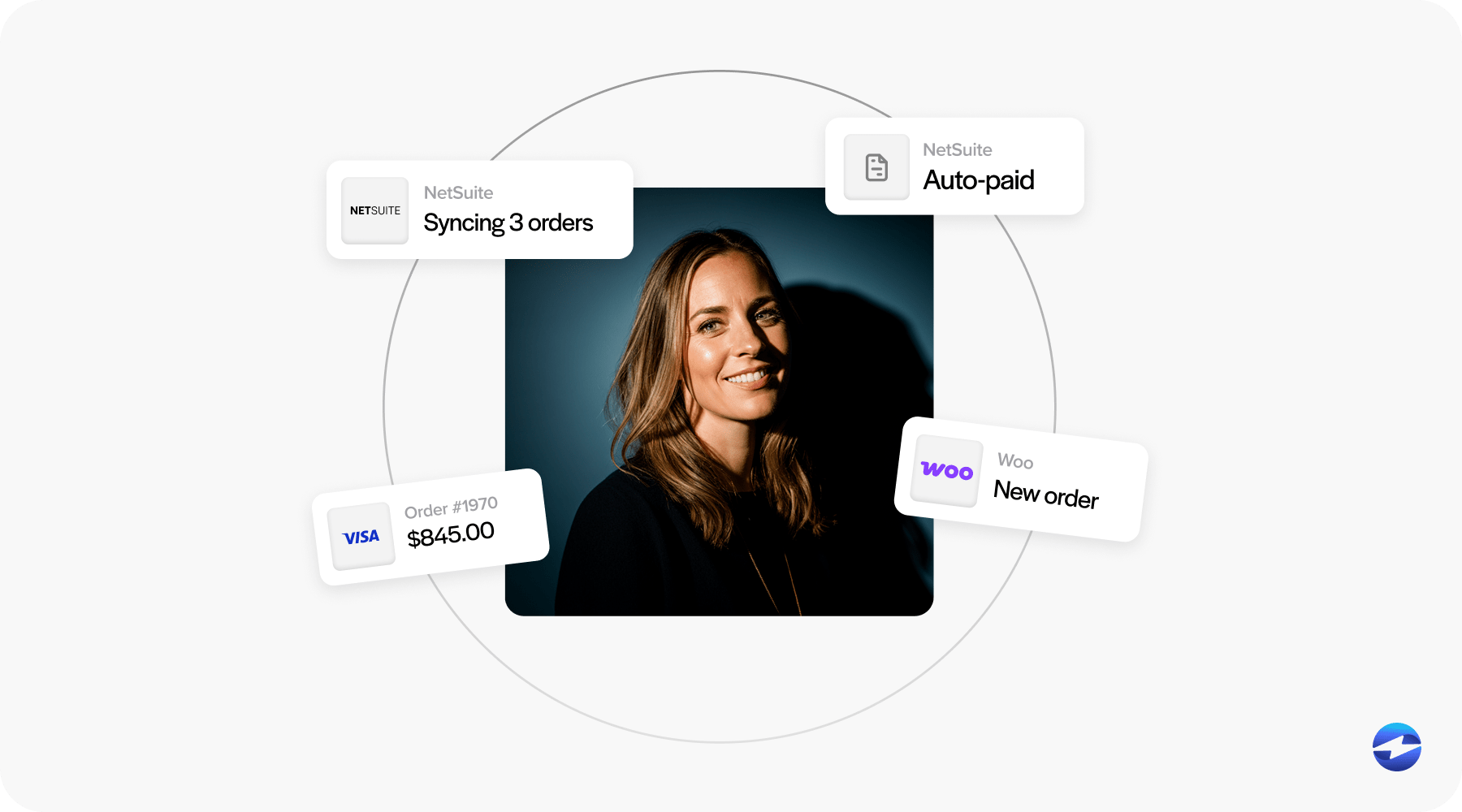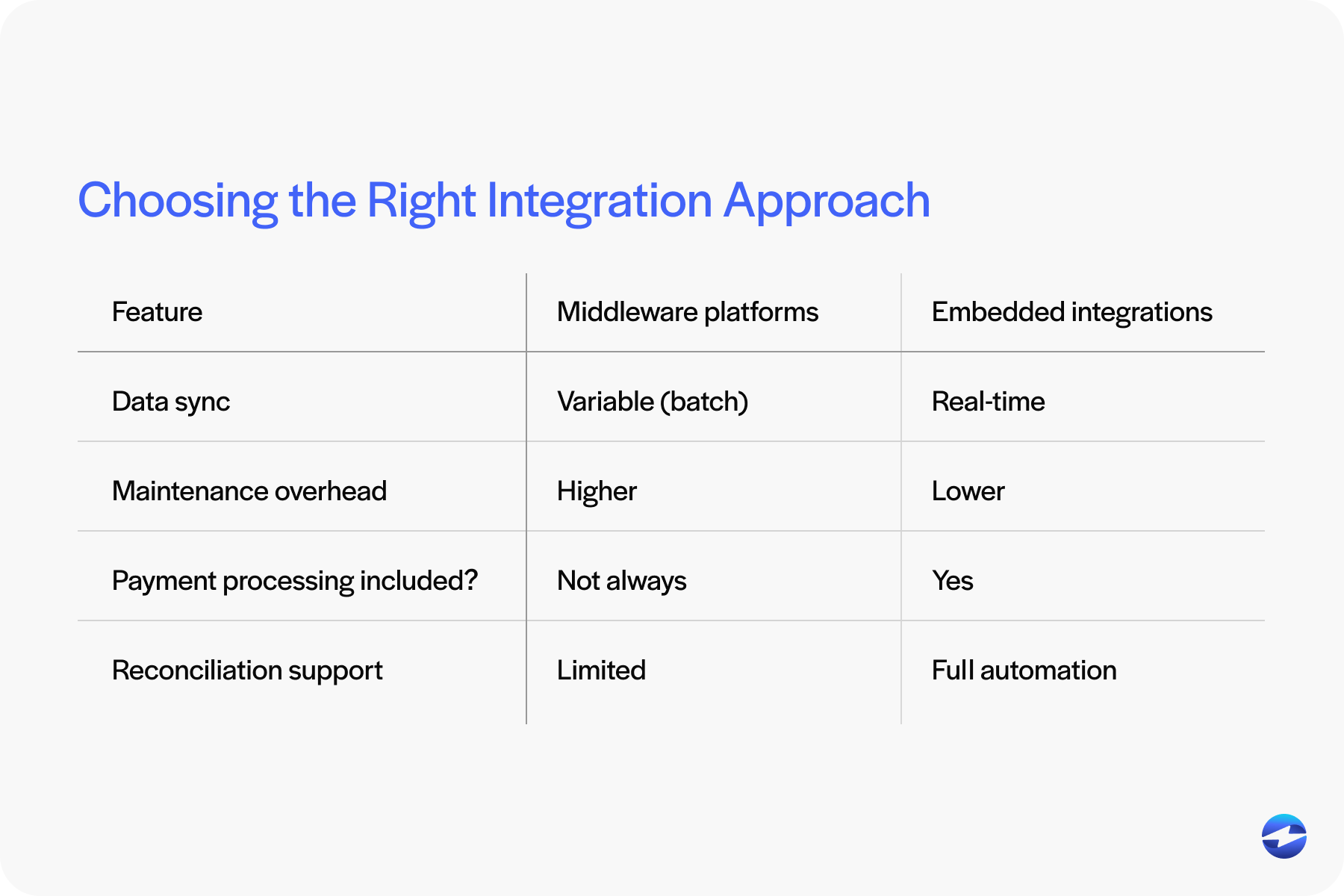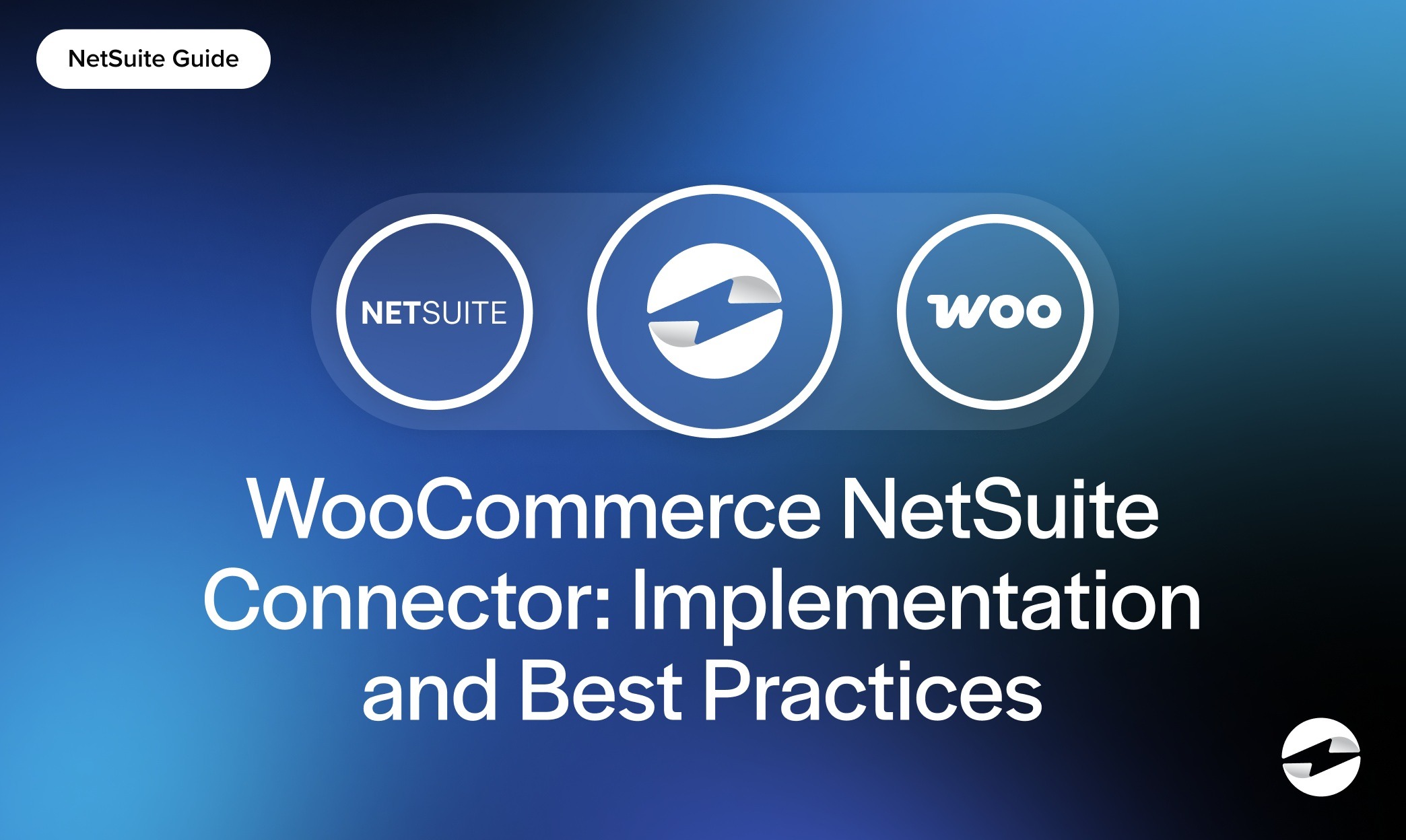Blog > WooCommerce NetSuite Connector: Implementation and Best Practices
WooCommerce NetSuite Connector: Implementation and Best Practices
The disconnect between e-commerce platforms and enterprise resource planning systems is a costly bottleneck for growth-oriented businesses. When your WooCommerce store is not integrated with your NetSuite ERP, your team spends hours every day manually transferring data, reconciling orders, and managing inventory across multiple systems. Not only does this siloed approach waste time—it introduces errors that impact customer satisfaction and financial precision.
For B2B companies that handle complex product catalogs, custom pricing, and high-volume orders, this challenge is even more pressing. The manual processes that might work for a small firm quickly become unsustainable as order volumes grow and business complexity increases.
Understanding WooCommerce NetSuite Integration
A WooCommerce NetSuite integration connector functions as the go-between for your webstore and your ERP system, auto-synchronizing critical business information in real-time or near real-time. Integration is far more extensive than simple order transmission—it creates one system whereby inventory levels, customer information, pricing, and financial information are continuously current on both systems.
The best integrations manage bidirectional data flow, which means data flows effortlessly in both directions. When an order is placed on your WooCommerce website by a customer, the integration instantly updates stock quantities in NetSuite, generates the respective sales order, and initiates fulfillment workflows. When inventory levels are changed in NetSuite, these changes are reflected in your WooCommerce product pages without any manual effort.

This level of automation is the requirement that businesses today must have to remain competitive. Businesses that continue to use manual data entry between systems are the ones that fall behind because of inventory discrepancies, late order fulfillment, and the administrative overhead of maintaining multiple sources of truth for important business data.
The Business Impact of Proper Integration
When businesses have their WooCommerce and NetSuite platforms fully integrated, the effects extend far beyond the simple synchronization of data. The ramifications flow through every aspect of operations, from day-to-day administrative tasks to strategic decision-making capabilities.
The immediate benefit of WooCommerce NetSuite integration is felt in day-to-day operations. Finance staff no longer spend hours typing order data into the ERP system manually, and inventory managers can trust stock levels displayed on the website to reflect on-hand inventory. This kind of operational efficiency translates directly to cost savings and improved employee satisfaction.
Consider the typical manual process: receive an order through WooCommerce, print it out or copy the information, manually enter it into NetSuite, update inventory, and maybe update the customer record with ship information. This can take 10-15 minutes per order and leaves plenty of room for error. With integration, this entire process happens automatically in a matter of seconds.

Enhanced Customer Experience
Integration improvements extend from internal efficiency to customer-facing benefits. Real-time inventory synching prevents oversell situations that lead to disappointed customers and difficult conversations. Customers are kept aware throughout with precise order status information, and the efficiency of operations often results in faster processing and shipping times.
For B2B customers who may be placing large or time-sensitive orders, this reliability is a market differentiator. If customers know they can count on your inventory levels and on regular order fulfillment, they’ll be more inclined to choose your company for significant purchases.
Typical Integration Issues and Solutions
Every WooCommerce NetSuite integration project faces unique obstacles, but certain challenges appear consistently across different implementations. Understanding these common pitfalls and their solutions helps businesses prepare for a smoother integration experience.
Technical Complexity
Most businesses lowball the technical complexity of integrating WooCommerce and NetSuite effectively. Both platforms offer broad customization abilities, and most companies have customized their systems to fit distinctive business processes. An integration must accommodate those customizations as well as have the flexibility to evolve with future business needs.
API limits are usually the biggest technical hurdle. NetSuite’s SuiteScript and RESTlet capabilities provide powerful integration options. However, they must be well planned to handle high-volume transactions and complex data linkages. WooCommerce’s REST API is fully featured, but for businesses with highly tailored stores, additional development work may be necessary to sync all data.
Data Quality and Mapping
Successful integration depends nearly completely on clean, well-structured data in both systems. Companies typically discover data quality issues only after they’ve begun the integration process. Product SKUs that are not identical across systems, customer records with different formats, and pricing models that are not similar can all threaten integration momentum.
The solution is to conduct a thorough data audit before integration begins. It standardizes naming conventions, uncovers inconsistencies, and establishes definitive data mapping rules that will govern how information will travel between systems.
The Role of Embedded Payments in Contemporary Integration
While generic WooCommerce, Magento, and BigCommerce NetSuite integrators sync orders and inventory, they skip a critical part of the puzzle: payment processing. Legacy solutions encompass siloed payment systems that add more data silos as well as reconciliation challenges.
Embedded payment solutions bridge this gap by integrating payment processing directly into the ERP flow. When payments are processed through an embedded solution, transaction data automatically posts into NetSuite alongside order data, creating complete financial records without additional manual effort.
Financial Reconciliation Benefits
This integrated approach dramatically minimizes financial reconciliation. Instead of reconciling payment records from an outside processor with NetSuite orders, finance staff have direct access to complete transaction records. Failed payments, partial payments, and refunds all update automatically, providing real-time visibility into cash flow and receivables outstanding.
For businesses processing hundreds or thousands of transactions a month, this automation eliminates a tremendous administrative burden while increasing financial precision. Month-end close processes are also simplified when payment data is already appropriately classified and posted in the ERP system.
Choosing the Right Integration Approach
Selecting the optimal WooCommerce NetSuite integration method requires a careful consideration of your business’s unique requirements, technical constraints, and long-term growth objectives. There is no single best fit for all businesses, and an improper choice will lead to time-consuming, costly rework down the line.
Evaluating Your Business Requirements
The best WooCommerce NetSuite integration approach depends on your business model, transaction volume, and growth plan. High-volume B2B businesses with complex pricing schemes need a different solution from smaller companies with minimal product offerings.
Some of the key considerations are:
- Peak load and transaction volume demands
- Business process and custom field demands
- Real-time vs. batch processing demands
- Security and compliance demands
- Implementation and ongoing maintenance budget
Integration vs. Embedded Solutions
Legacy integration solutions commonly entail linking current systems using middleware platforms or APIs. Although this might function effectively, it tends to present constant upkeep issues and might not holistically cater to all business requirements.

Embedded solutions work differently by building integration capability right into specialized platforms designed for your industry. In the case of payment processing and financial workflows, embedded solutions will provide superior functionality because they’re built from the beginning to handle the complexities of business transactions today.
Implementation Best Practices
The difference between successful and problematic WooCommerce NetSuite integrations typically comes down to the quality of the implementation process. Even the most perfect technical solution will fail if it is not properly planned, tested, and its changes managed.
Planning and Preparation
Successful WooCommerce NetSuite integration projects begin with thorough planning and stakeholder alignment. This includes making a list of all of the systems affected, mapping out current workflows, and establishing clear success metrics for the integration.
Planning must also address change management concerns. Staff that currently perform manual data entry need to be trained on new procedures, and managers have to revise reporting and supervision procedures to accommodate automated workflow.
Testing and Validation
Comprehensive testing protects against integration issues that can disrupt business processes. This includes testing for accuracy of data, load performance, and error handling for various scenarios. Most organizations benefit from having parallel systems run for an initial test period to verify that the integration functions as it is supposed to.
Tests should cover edge cases and failure scenarios, not just normal functioning. How does the system handle partial shipments, returns, or inventory adjustments? What happens if one system is down? Taking care of such cases while testing prevents operational problems in the future.
Measuring Integration Success
Understanding whether your WooCommerce NetSuite integration is delivering value as hoped requires establishing clear metrics and control systems right from the start. Success is achieved in both near-term operational efficiencies and more strategic longer-term advantages.
Quantifiable Metrics
WooCommerce NetSuite integration success is seen in concrete improvements in those business metrics most critical. Order processing time is typically cut dramatically, typically from hours to minutes. Inventory accuracy is improved as real-time synchronization does not allow for discrepancies between systems.
Financial reporting error rates are minimized since manual data entry is prevented, and month-end closing processes are simplified by automating transaction posting. These advantages translate directly into cost savings and improved operational capacity.
Strategic Benefits
Along with near-term operational improvements, successful integration enables strategic advantages underlying long-term growth. Improved data integrity drives improved decision-making, and automated processes free up staff to focus on higher-value activities like customer service and business development.
Real-time visibility into inventory, orders, and financial performance enables more agile response to market events and customers’ requirements. This kind of operational agility becomes increasingly valuable as businesses increase in size and market conditions evolve.
Future-Proofing Your E-commerce Operations
E-commerce continues to evolve swiftly, with emerging technologies and customer expectations popping up regularly. A well-designed WooCommerce NetSuite integration should be capable of accommodating future growth and technological evolution without requiring complete system redesigns.
Scalability Considerations
Your integration approach should handle increased transaction volumes without degrading performance. This includes considering database capacity, API rate limits, and processing power requirements for peak demand periods. Many businesses underestimate their growth potential and end up needing integration upgrades sooner than expected.
Cloud solutions generally provide more scalability options than on-premise setups, with the ability to adjust resources in real-time based on demand. However, the best solution depends on your specific security requirements, budget, and technical know-how.
Emerging Technology Integration
E-commerce and ERP systems are incorporating artificial intelligence and machine learning capabilities. Your integration approach needs to be sufficiently agile to include these capabilities as they become relevant to your business processes.
Mobile commerce continues to grow, and B2B customers increasingly expect mobile-friendly ordering experiences. Ensure that your integration will be capable of supporting mobile projects and omnichannel customer experiences as these become more critical to your market.
Taking Action on Integration
The decision to integrate WooCommerce and NetSuite is a significant step towards business growth and operational efficiency. However, due to the complexity of such projects, it is essential to collaborate with experienced partners that understand both the technical requirements and business implications of integration.
The best integration projects begin with a clear picture of your present pain points and definite goals for enhancement. This point of departure enables you to evaluate different methods realistically and make decisions that align with your business direction in the long run.
Whether you go with a traditional integration model or an embedded offering with payment processing, the key is to select a partner that has a proven track record of experience in your business vertical and a record of successful implementations. The right integration will transform your business, increase customer satisfaction, and position your firm for long-term success in an increasingly competitive marketplace.

